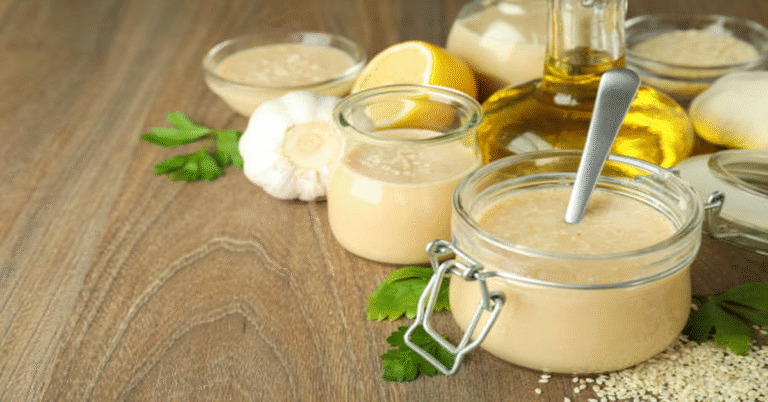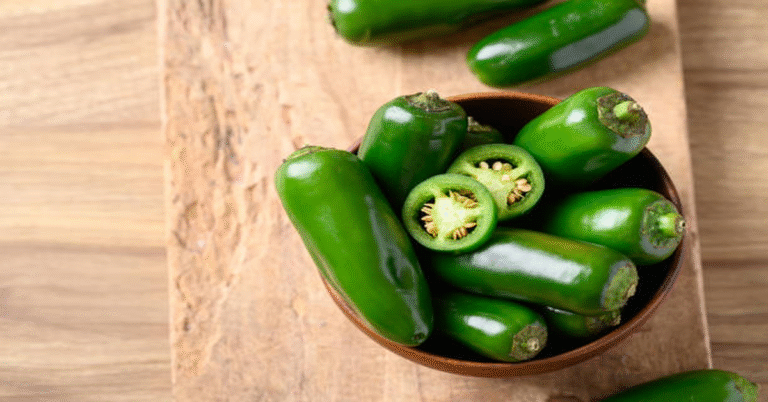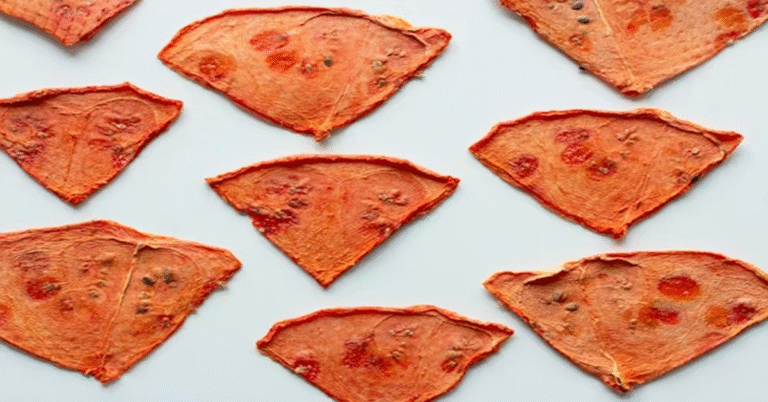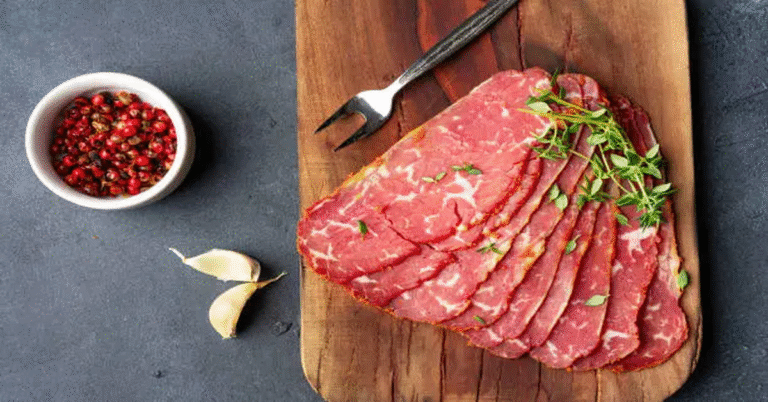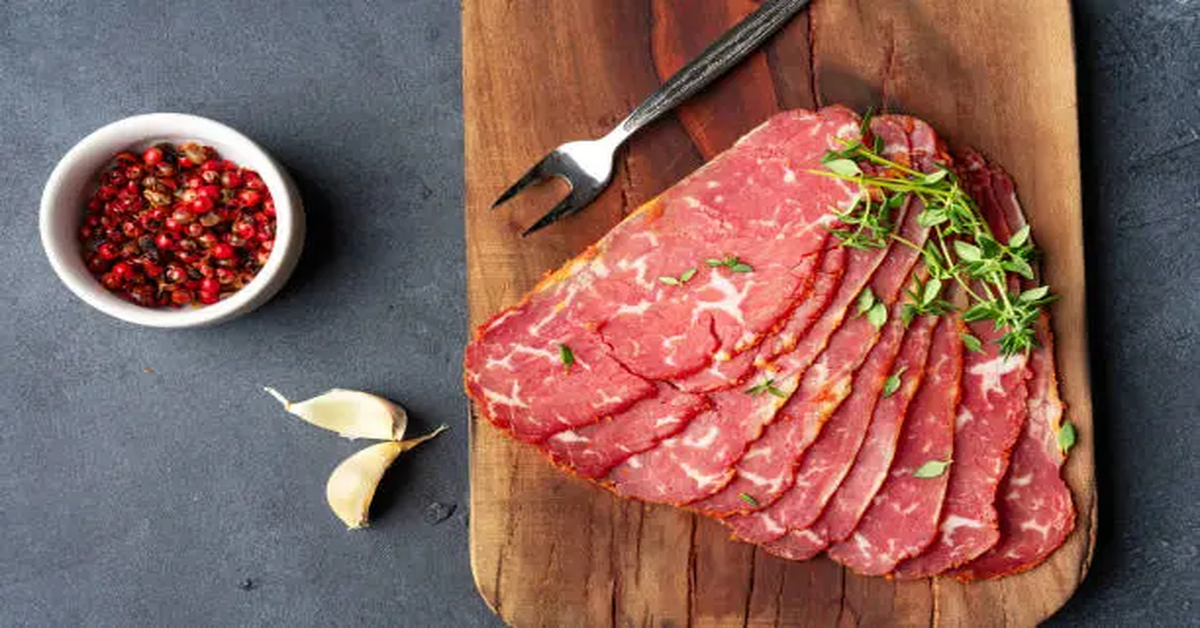
Few foods embody tradition, craftsmanship, and global influence quite like pastrami. Known for its smoky, spicy, and tender bite, pastrami has become an iconic delicacy enjoyed worldwide, though its roots trace back centuries to Eastern Europe. Today, it stands as a symbol of culinary heritage, especially in Jewish delis in the United States, but also finds its way into countless kitchens, restaurants, and fusion dishes globally.
Pastrami is not simply a cured meat. It is the result of a careful process of brining, seasoning, smoking, and steaming, all of which transform a simple cut of beef into a deeply flavorful creation. Its preparation techniques reflect generations of knowledge and cultural exchange, while its nutritional values, versatility, and enduring popularity reflect how adaptable and beloved this food truly is.
This article explores pastrami’s journey from its historical origins to modern-day interpretations, delving into its history, preparation techniques, nutrition profile, cultural meaning, and global applications. Along the way, we’ll also compare pastrami with other cured meats, analyze its role in diets, and highlight how it continues to evolve in contemporary cuisine.
Origins and History of Pastrami
Eastern European Roots
The term “pastrami” originates from the Romanian word “pastramă,” which itself derives from the Turkish “pastırma,” meaning “to press or preserve.” In the Ottoman Empire, meat preservation was crucial before refrigeration. Meat was salted, spiced, and dried to prolong shelf life while enhancing flavor. Romanian Jews later adapted this method, making it central to their culinary traditions.
Migration to America
In the late 19th century, Jewish immigrants brought pastrami to New York. The American environment offered new resources, especially beef brisket, which became the preferred cut for pastrami production. Delicatessens flourished, and pastrami sandwiches soon became iconic in American food culture.
Cultural Expansion
- New York City Delis: Pastrami on rye with mustard became legendary, often seen as the ultimate deli experience.
- Global Influence: Today, pastrami has traveled well beyond Jewish delis, appearing in fast-food menus, artisanal charcuterie boards, and modern fusion dishes.
What Exactly is Pastrami?
Pastrami is typically beef brisket, though other cuts such as navel or round are sometimes used. It undergoes a multi-stage preparation involving curing, spicing, smoking, and steaming. The end result is meat that is deeply seasoned, smoky, and tender enough to almost melt in your mouth.
| Step | Description |
|---|---|
| Brining | Meat is soaked in a salt and spice solution for flavor and preservation. |
| Seasoning | Rubbed with spices like black pepper, coriander, garlic, and paprika. |
| Smoking | Slowly smoked over hardwood to develop aroma and depth. |
| Steaming | Final steaming makes the meat tender and juicy before slicing. |
The Anatomy of Flavor
The appeal of pastrami lies in its complex layering of flavors:
- Saltiness: From brining, necessary for both taste and preservation.
- Spiciness: Coarse pepper and coriander seeds form the classic crust.
- Smokiness: Wood smoking infuses a rich, aromatic character.
- Tenderness: Steaming transforms the tough brisket into melt-in-mouth slices.
The unique combination of salty, smoky, spicy, and tender makes pastrami distinct from other cured meats like corned beef or salami.
Nutritional Profile of Pastrami
Pastrami, like many cured meats, provides protein, minerals, and energy but also contains sodium and fat that require moderation. Here’s the nutritional breakdown per 100 grams:
| Nutrient | Amount (approx.) | Health Role |
|---|---|---|
| Calories | 150–170 kcal | Moderate energy source |
| Protein | 15–20 g | Builds and repairs tissues |
| Fat | 8–10 g | Provides energy and satiety |
| Saturated Fat | 3–4 g | Should be limited for heart health |
| Carbohydrates | 0–2 g | Very low, fits into low-carb diets |
| Sodium | 850–950 mg | High, requires moderation |
| Iron | 2.5 mg | Important for oxygen transport |
| Zinc | 3–4 mg | Supports immune system |
| Vitamin B12 | 1.5 µg | Vital for nerve and blood health |
Health Considerations
- Strengths: High in protein, B vitamins, and minerals.
- Cautions: High sodium and saturated fat levels may be problematic in excess.
- Diet Fit: Works well in high-protein and low-carb diets but should be balanced with vegetables and whole grains.
Comparison: Pastrami vs. Corned Beef vs. Salami
To better understand pastrami, it helps to compare it with similar meats.
| Aspect | Pastrami | Corned Beef | Salami |
|---|---|---|---|
| Main Meat | Beef brisket or navel | Beef brisket | Beef, pork, or mixture |
| Preparation | Brined, spiced, smoked, then steamed | Brined, boiled | Fermented, cured, air-dried |
| Flavor Profile | Smoky, spicy, aromatic | Salty, mildly spiced | Tangy, spicy, fatty |
| Texture | Tender, juicy | Firm, less smoky | Dense, chewy |
| Culinary Use | Deli sandwiches, charcuterie, entrées | Sandwiches, hash, St. Patrick’s dishes | Charcuterie, pizza, antipasti |
Culinary Applications of Pastrami
Classic Pastrami Sandwich
The quintessential pastrami dish is the sandwich on rye bread with mustard. Layers of steaming pastrami slices create a hearty, savory, and nostalgic meal.
Pastrami Beyond the Sandwich
- Salads: Thin slices add protein and smoky flavor to greens.
- Breakfast: Pastrami omelets or scrambled eggs.
- Pizza and Wraps: Modern chefs experiment by adding pastrami to pizzas and tortillas.
- Charcuterie Boards: Served alongside cheeses, olives, and artisan bread.
- Fusion Cuisine: Pastrami tacos, ramen bowls, or stuffed pastries.
Cultural Significance
Pastrami is not just food—it’s heritage.
- Jewish-American Identity: Pastrami embodies the immigrant experience, blending old-world traditions with new-world adaptations.
- Iconic Delis: Katz’s Delicatessen in New York epitomizes pastrami culture, where ordering a pastrami sandwich is almost a ritual.
- Festivals and Competitions: Pastrami-themed festivals showcase variations and celebrate its role in food culture.
Preparing Pastrami at Home
Making pastrami at home is time-intensive but rewarding.
Basic Steps
- Brine the Beef: 5–7 days in a salt, sugar, and spice solution.
- Spice Rub: Coat with pepper, coriander, garlic, and paprika.
- Smoke: Use hardwood at low temperature for several hours.
- Steam: Finish by steaming until tender.
- Slice and Serve: Thin slices against the grain maximize tenderness.
Tips
- Always choose fatty brisket for juiciness.
- Patience is key—rushing the process compromises flavor.
- Use fresh, coarsely ground spices for an authentic crust.
Pastrami in Global Context
United States
Most strongly associated with New York Jewish delis, though also popular nationwide in sandwiches and fast food.
Europe
In Romania and Turkey, versions of preserved beef (pastramă, pastırma) remain staples.
Middle East
Pastırma, the Turkish predecessor, is highly spiced and air-dried, influencing regional cuisines.
Modern Fusion
Pastrami’s adaptability makes it a global star in innovative kitchens—pastrami tacos in Mexico, pastrami sushi rolls in Japan, or pastrami burgers in Europe.
Pastrami and Modern Diet Trends
- Low-Carb/Keto: High protein, very low carbohydrate makes pastrami suitable.
- Paleo: Traditional curing fits, though sodium content is a consideration.
- Balanced Diets: Best enjoyed with fiber-rich sides like whole-grain bread and vegetables.
- Vegetarian/Vegan Alternatives: Plant-based pastrami made from seitan or mushrooms imitates texture and flavor for alternative diets.
Challenges and Concerns
- Health: High sodium and fat content require moderation.
- Commercial Production: Mass-produced pastrami often uses additives and shortcuts.
- Cultural Preservation: Authentic deli traditions are declining in some regions, replaced by fast-food versions.
Future of Pastrami
Pastrami is evolving in exciting ways:
- Artisanal Revival: Small-batch delis focus on traditional techniques.
- Healthier Versions: Leaner cuts, reduced sodium recipes, and natural curing methods.
- Plant-Based Alternatives: Vegan pastrami gaining popularity.
- Globalization: Increasing presence in international cuisines and fusion foods.
Conclusion
Pastrami is far more than a cured meat—it is a culinary story woven through history, culture, and flavor. From Romanian roots and Jewish immigrant kitchens to New York delis and global fusion dishes, pastrami has evolved into an enduring food icon. Its rich preparation process, nutritional offerings, and cultural symbolism make it both a comfort food and a gourmet choice.
While modern health trends encourage balance in consumption, pastrami’s versatility ensures it will remain relevant—whether enjoyed in its classic sandwich form, reinvented in global cuisine, or adapted into healthier or plant-based alternatives. Pastrami is not just sustenance; it is tradition, innovation, and identity on a plate.
FAQs
1. What cut of meat is used for pastrami?
Traditionally, pastrami is made from beef brisket, though navel or round cuts are sometimes used.
2. How is pastrami different from corned beef?
Pastrami is smoked and steamed after brining, while corned beef is simply brined and boiled, giving distinct flavors.
3. Is pastrami healthy?
Pastrami is rich in protein and nutrients but also high in sodium and fat, so it should be eaten in moderation.
4. Can pastrami be made at home?
Yes, with patience. It requires brining, seasoning, smoking, and steaming over several days.
5. Are there vegetarian alternatives to pastrami?
Yes, plant-based pastrami made from seitan, mushrooms, or legumes mimics the flavor and texture for vegan diets.

